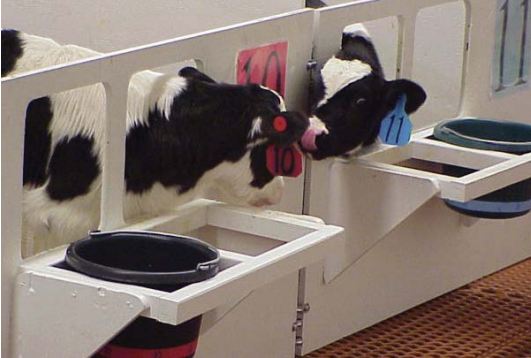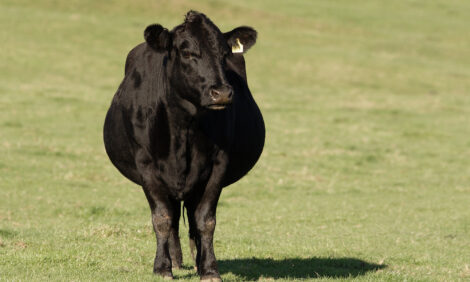



Understand Consumption When Feeding Calves
Calf shed workers can often be working with calves one day to 12 weeks old which all have vastly different needs.For this reason, Christie Underwood, calf and heifer specialist at Purina Animal Nutrition, advises to note the varying stages present, the amount of calf starter animals are eating and to increase allotments if feed is regularly finished.
The Young Calf (First two weeks of life)
Within the first two weeks of life, calves often consume very little calf starter and are more dependent upon liquid nutrition, writes Mrs Underwood. Avoid the temptation to offer a large amount of feed to young calves. Ideally, calf starter should be changed every day and old feed should be discarded. Unfortunately, this doesn’t always happen, and uneaten calf starter goes to waste.
*
"Some operations leave calves in a hutch or pen for up to 12 weeks of age and use this time to introduce a calf to grower feed and adjust it to a diet higher in fiber"
Stale calf starter may look OK to eat, but it no longer is palatable. This will interfere with consumption.

Photo Courtesy of J.W. Schroeder
3 to 4 Weeks of Age
By the time calves reach 3 to 4 weeks old, noticeable increases in calf starter intake should be seen.
During this time frame, employees must monitor feed intake closely because this increase often can go unnoticed and calf growth could be hindered due to inadequate nutrition. Calf feeders should pay attention to how much feed is left. If calves are finishing their feed on a regular basis, then their daily allotment should be increased.
Weaning (4 to 8 weeks old)
By the time calves reach weaning age, they should be consuming higher amounts of calf starter. Calf starter intake even may double by this stage. Be aware of potential spikes in consumption and be ready to meet calves’ increased appetite. As calves continue to grow, starter consumption increases significantly. Do not limit intake at this stage of development. Also do not to let calves go periods of time without starter. Some animals may slug feed when feed does become available and this could lead to bloat.
Grain-only phase (8 to 12 weeks old)
After calves are weaned, they rely on complete feeds as their sole source of nutrition. To overcome losses during this transition, some operations leave calves in a hutch or pen for up to 12 weeks of age and use this time to introduce a calf to grower feed and adjust it to a diet higher in fiber.
To help achieve optimal growth, calf starter always should be fresh, dry and readily available. By working closely with your calf feeders, overconsumption and underconsumption of feed can be prevented. Doing so can allow your calves to get the most out of the nutrients you provide to them so they are able to keep growing and become productive cows with greater profit potential.


